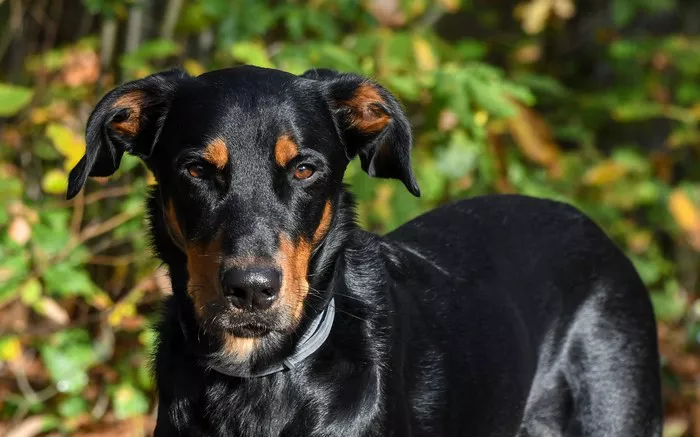The Beauceron, a versatile and intelligent French herding breed, has long fascinated dog enthusiasts with its striking appearance and multifaceted abilities. Known for its loyalty, athleticism, and protective instincts, this breed’s lineage raises questions about its genetic and historical connections to other dogs. To identify the Beauceron’s closest relative, we must explore its origins, compare physical and behavioral traits, and analyze genetic studies and historical records. This article uncovers the breeds most closely linked to the Beauceron and explains how these relationships shaped its development.
Origins of the Beauceron
Historical Roots in France
The Beauceron originated in the plains of northern France, where it was primarily used as a herding and guardian dog for livestock. Historical records suggest the breed dates back to at least the 16th century, with farmers valuing its ability to manage large flocks while deterring predators. Its name derives from the La Beauce region, a fertile agricultural area near Paris.Unlike many modern breeds, the Beauceron was not developed for show purposes but for practical work. Its dual role—herding sheep and protecting property—required a combination of agility, intelligence, and physical strength. These traits made it indispensable to rural French communities.
The Beauceron’s Closest Relatives
The Briard: A Shared Heritage
The Briard, another French herding breed, is often considered the Beauceron’s closest relative. Both breeds were historically grouped under the term “Berger de Beauce” (shepherd of Beauce) and “Berger de Brie” (shepherd of Brie), reflecting their regional origins.
Physical Similarities: Both breeds have robust builds, double coats, and erect ears. However, the Briard has a longer, shaggier coat and a more pronounced beard.
Functional Overlap: Like the Beauceron, Briards were used for herding and guarding. Their working styles differ slightly—Beaucerons are more direct and assertive, while Briards rely on subtlety and endurance.
Genetic studies confirm a close relationship between the two breeds, though they diverged significantly in the 19th century when breed standards were formalized. Today, they are recognized as distinct breeds but retain a shared genetic legacy.
The Doberman Pinscher: A Controversial Connection
The Doberman Pinscher, a German breed developed in the late 1800s, is frequently cited as a descendant of the Beauceron. Karl Friedrich Louis Dobermann, the breed’s creator, reportedly used Beaucerons among other breeds to develop the Doberman’s agility and guarding instincts.
Shared Traits: Both breeds exhibit high intelligence, territorial behavior, and a natural aptitude for police and military roles.
Differences: Dobermans are leaner and more streamlined, optimized for speed, while Beaucerons retain a bulkier, herding-oriented build.
While the exact extent of Beauceron influence on the Doberman remains debated, historical accounts and temperamental parallels suggest a significant genetic contribution.
The Rottweiler: A Common Working Legacy
The Rottweiler, a German breed with Roman origins, shares functional similarities with the Beauceron. Both were used for herding and guarding livestock, and both excel in modern roles such as search-and-rescue or police work.
Behavioral Parallels: Both breeds are confident, loyal, and highly trainable. They require consistent socialization to manage their protective instincts.
Genetic Distance: Despite overlapping roles, genetic analyses show no direct lineage between the two. Their similarities stem from convergent evolution rather than shared ancestry.
Genetic and Historical Evidence
DNA Studies and Breed Lineages
Modern DNA studies place the Beauceron within the broader “herding dog” cluster, which includes breeds like the German Shepherd and Collie. However, its closest genetic matches remain the Briard and, to a lesser extent, old European working breeds like the Dutch Shepherd.Historical records from France indicate that Beaucerons were occasionally crossbred with local mastiffs to enhance their guarding abilities, but these mixes did not evolve into standalone breeds.
The Role of Regional Isolation
The Beauceron’s development was shaped by geographic isolation in rural France. Unlike breeds influenced by international trade or royal patronage, the Beauceron remained relatively unchanged until the 19th century, when breed clubs began standardizing its appearance. This isolation preserved its genetic distinctiveness, limiting close relatives to regional counterparts like the Briard.
Modern Implications of the Beauceron’s Heritage
Breeding and Health Considerations
Understanding the Beauceron’s genetic ties helps address modern health challenges. For example, both Beaucerons and Briards are prone to hip dysplasia, highlighting the need for responsible breeding practices. Additionally, the breed’s historical link to Dobermans underscores shared vulnerabilities to bloat and cardiac issues.
Training and Temperament Insights
The Beauceron’s herding and guarding instincts, inherited from its ancestors, require structured training. Owners must channel its intelligence into activities like agility, obedience, or scent work—tasks that mirror its historical roles.
Conclusion
The Beauceron’s closest relatives are the Briard and, indirectly, the Doberman Pinscher. While the Briard shares a direct regional and genetic lineage, the Doberman reflects selective crossbreeding for enhanced working traits. These relationships highlight the Beauceron’s enduring legacy as a versatile working dog, shaped by centuries of practical demand and careful breeding.By studying its ancestry, we gain insights into the Beauceron’s unique blend of traits—a combination that continues to captivate dog lovers and working professionals alike. Whether herding sheep or excelling in canine sports, the Beauceron remains a testament to the enduring value of purposeful, history-driven breeding.
Related Topics:


